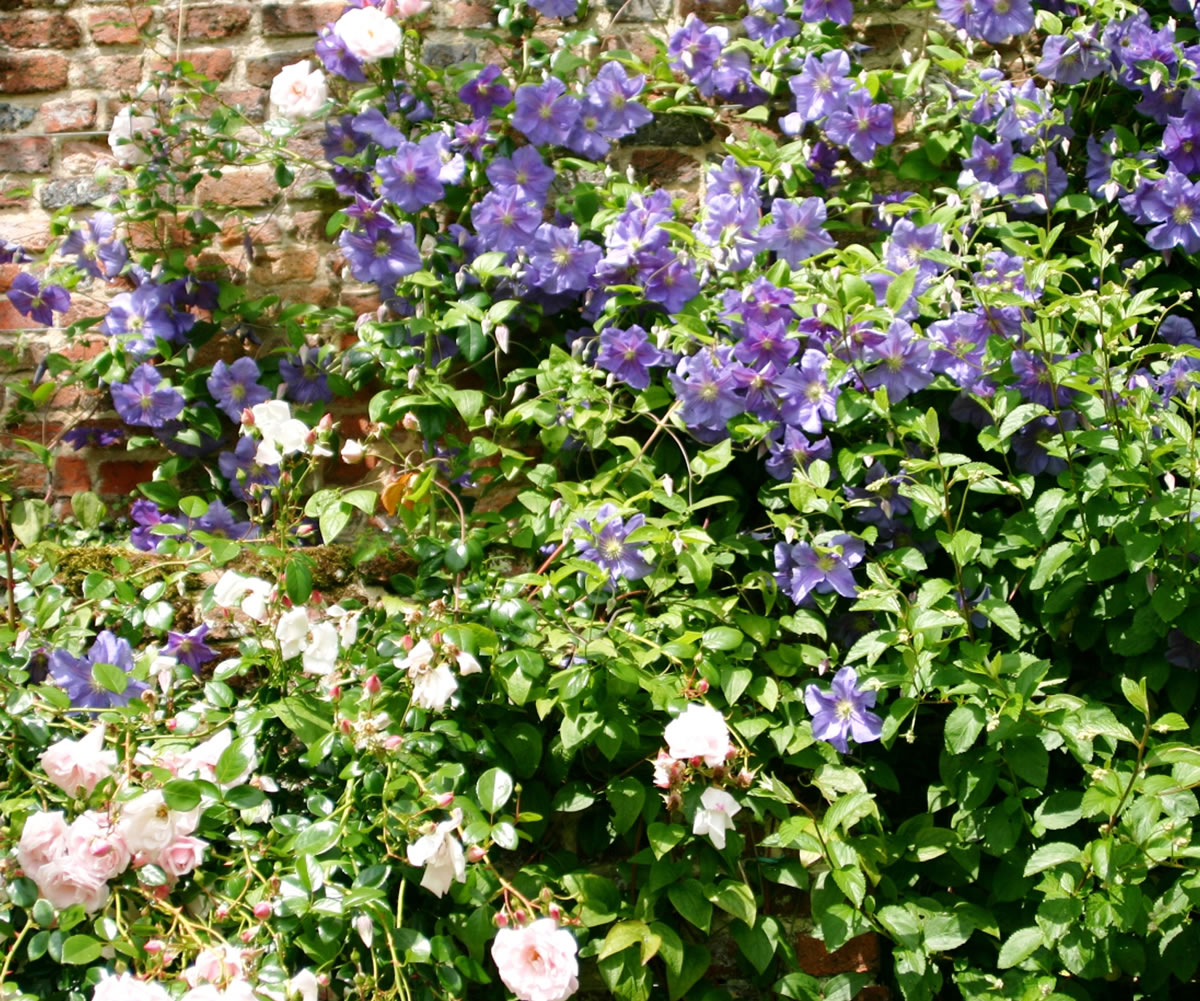More than any other group of plants, the family of vines displays a vast array of distinct personalities. Vines come in a wide variety of forms, including bush, climbing and trailing. Their flowers come in infinite shapes, sizes and colors. Like Brad Pitt and Angelina Jolie, vines often appear larger than life, as they rise above the plants around them. When they reach the peak of their individual form, they have been known to take one’s breath away.
The Chinese wisteria is strong, rangy and beautiful in a powerful, handsome way. Clematis can be dainty or flamboyant, almost always floriferous. The Parthenocissus family, which includes Boston Ivy and Virginia Creeper, clamber up the walls of houses and barns in their own unique manner. Roses, while not really vines, can be trained in wide, upright arches to boost flower production and show their blossoms to perfection.
Climbing plants add a vertical element to the garden, drawing the eye up from the level of perennials and shrubbery, into the realm of trees and sky. Golden Hops will lead the eye up a post, to a birdhouse in a glow of golden foliage. Clematis, planted near a flowering tree, will wend its way through the branches and peek its flowers out into the sunlight, adding another season of bloom.
One of my personal favorites is the tongue twisting Ampelopsis brevipedunculata “Elegans.” Better known as the Porcelain Berry vine, it’s a must-have plant when you see it growing well in a Pacific Northwest garden. Its deeply cut leaves are mottled dark green, light green and cream with subtle hints of pink in spring and fall. On top of that, in late summer an explosion of petite flowers will mature into shiny, enameled berries of deep purple, blue and turquoise.




